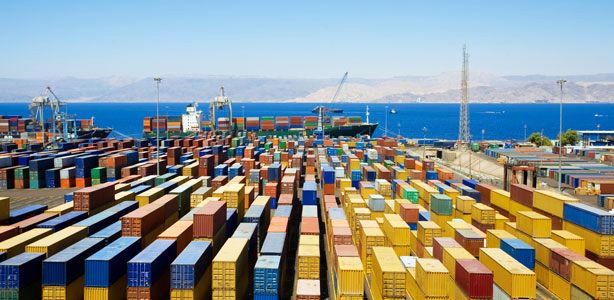It’s clear now that U.S. markets, in their swift early-2016 downdraft, were too worried about the risks of a recession. Friday’s jobs number helped put most lingering doubts to rest.
Now, the opposite question is on the table. Are the markets, especially recently buoyant commodities and emerging markets, correctly predicting a global economic rebound that would undo the damage from last year?
Friday’s U.S. trade data say these markets are wrong and that the global economy is weak at best. The U.S. trade deficit grew 2.2% on the back of lower imports and exports, with shipments declining for nearly everything except for cars.
The trade figures matter more than the jobs numbers for two reasons. First, they show the impact of the stronger dollar on the U.S. economy, which is harder to grasp than things such as the unemployment rate.
Second, they highlight the dismal situation of most of the rest of the world’s economies. The contrast between the jobs number and the trade data was stunning. The trade data also call into question the big rally we have seen in emerging markets’ stocks and bonds and in commodities such as iron ore and oil.
Exports were down 2.1% in January, and the level of goods exported was the lowest since February 2011, when the financial crisis was still fresh. Exports to Canada, Latin America and China hit multiyear lows.
True, some of the decline can be attributed to lower commodities prices. But the U.S. data fit with overall weak global trade. For years, trade grew faster than the global economy, now it has become a drag on growth.
Where markets in the U.S. priced in a doomsday scenario earlier this year, commodities and emerging-markets stocks appear to be ignoring the weak trade figures. Emerging-market stocks are up 12% since late January and oil has jumped by a third, albeit after big selloffs.
The weak trade figures show that countries won’t be able to export their way out of the slowdown, and instead will need to generate growth at home. That is a big ask for places such as Brazil and Indonesia, which are dependent on commodities exports, and on China, which has failed to reform its economy and financial system to arrest the big slide in growth.
They also show that the U.S. economy is a lone shining star right now. U.S. imports were down just 1.3% in January despite the fall in commodities prices, and had risen in December.
The risk is that weak global trade actually drags down the U.S. economy, depriving the world of one of its only engines of growth. According to IHS Global Insight, models used by the Federal Reserve show that the 19% rise in the dollar since July 2014 could cut nearly 3% off real U.S. gross domestic product from 2015-2017.
The jobs numbers sent markets only modestly higher Friday, with the Dow crossing 17000 for the first time since the opening days of the year. But the market is still 7.3% below its highs last year before it began flashing warning signs of recession.
The Dow may have overshot to the downside earlier this year. Now, it is the rallying commodities and emerging markets that seem to be overdoing it. Source: Wall Street Journal
